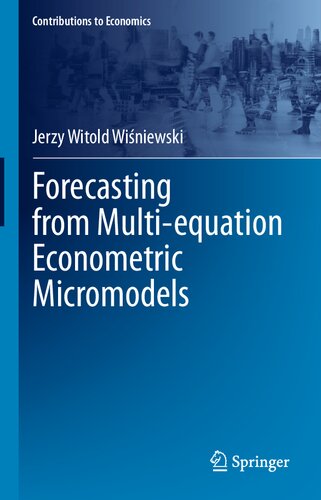

Most ebook files are in PDF format, so you can easily read them using various software such as Foxit Reader or directly on the Google Chrome browser.
Some ebook files are released by publishers in other formats such as .awz, .mobi, .epub, .fb2, etc. You may need to install specific software to read these formats on mobile/PC, such as Calibre.
Please read the tutorial at this link: https://ebookbell.com/faq
We offer FREE conversion to the popular formats you request; however, this may take some time. Therefore, right after payment, please email us, and we will try to provide the service as quickly as possible.
For some exceptional file formats or broken links (if any), please refrain from opening any disputes. Instead, email us first, and we will try to assist within a maximum of 6 hours.
EbookBell Team

5.0
50 reviewsForecasting from multi-equation models has very rarely been the focus in econometric literature. In response, this book presents a range of methodologies to approach this complex field and offers readers essential information on forecasting from multi-equation econometric micromodels.
In the twentieth century, significant interest in econometric macromodels emerged. These multi-equation models are mostly systems of interdependent equations, most often used to describe the national economies of various countries. The book analyzes econometric forecasting procedures and illustrates them with empirical examples that are based on real economic (mostly business-derived) data. The procedure of forecast building from systems of interdependent equations is presented for two categories of econometric models: models with a feedback effect and models with closed-loop links between interdependent variables.
The forecasts obtained via this technique are compared with the results derived from reduced-form equations of the respective econometric model. The author also generalizes the rules of the reduced-recursive (helical, iterative) procedure application, against the backdrop of the proposed method of forecast building from reduced-form equations of systems of interdependent equations. Given its scope, the book will appeal not only to PhD students and researchers, but also undergraduate students and academics in general.